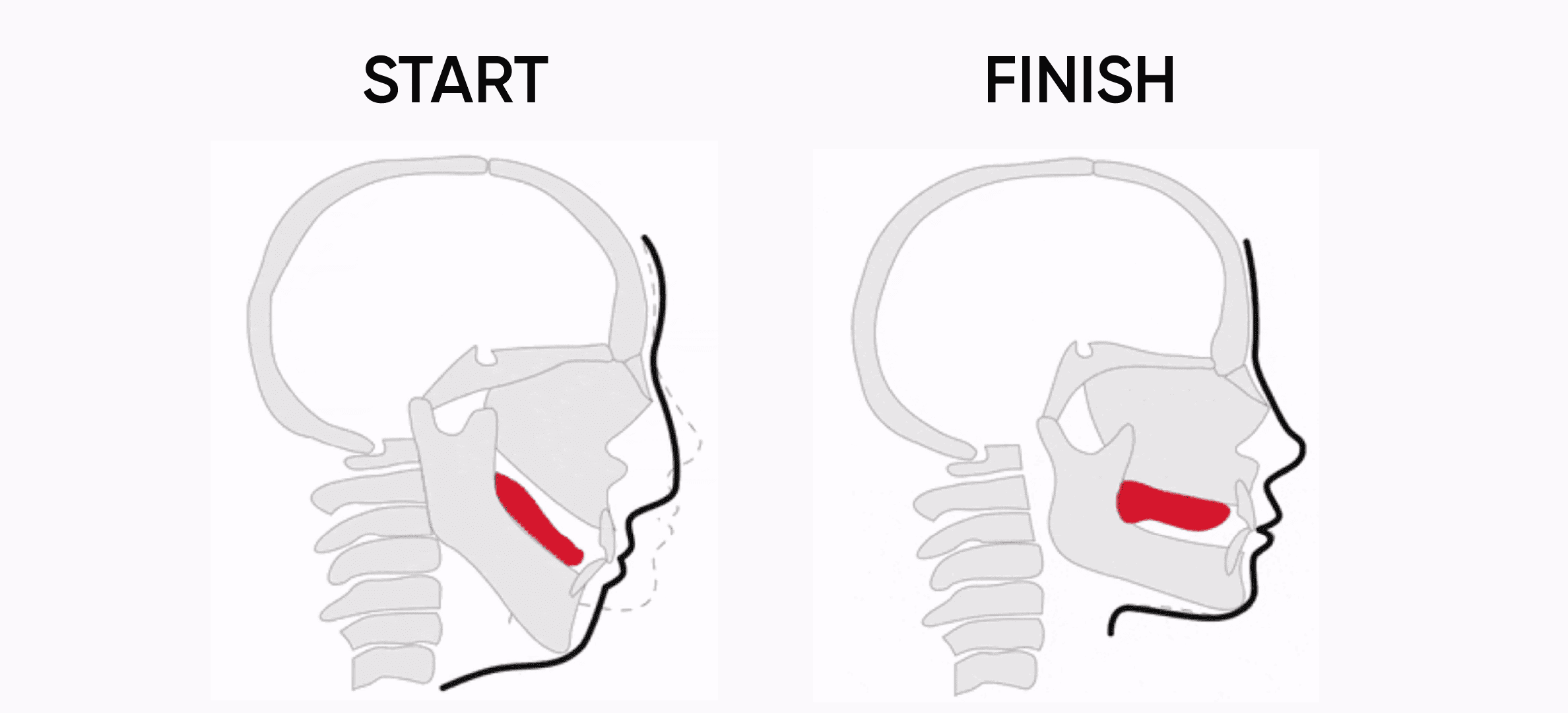Mewing with an Overbite: Effective Technique or Myth?

Share

Understanding Overbites
An overbite occurs when the upper set of teeth protrudes beyond the lower set, resulting in an overlap between the two rows of teeth. In many cases, a minor overbite is considered normal and not a cause for concerns.

However, a more pronounced overbite, referred to as a deep overbite, can significantly impact one's facial appearance.
Studies, such as one conducted by Harfin et al. (2014), have highlighted the prevalence and complexity of deep overbites, affecting approximately 5-8% of the population.
Deep overbites may be accompanied by various dental problems and can lead to complications like tooth decay, headaches, difficulty in mouth movement, and even sleep apnea.
Moreover, they can contribute to unfavorable changes in facial structure. The presence of a deep overbite may cause discomfort, jaw pain, teeth erosion, trauma to the palate, and gum issues.
As such, seeking treatment for a deep overbite is advisable, with potential solutions varying based on individual circumstances.
Mewing with an Overbite: Can It Help?

Mewing entails the expansion and repositioning of the maxilla to achieve a more balanced facial appearance. This transformative movement might, in some cases, appear to worsen an overbite.
However, it is crucial to consider the nuances of mewing techniques. Mewing may not suffice as a standalone solution for overbites, and a consultation with a dental professional is recommended.
If an improper oral posture is the root cause of your overbite, mewing might hold the potential for correction, although it remains unverified.
The Science Behind Mewing and Overbites
Mewing involves maintaining proper tongue posture by pressing the tongue against the roof of the mouth. This technique aims to exert consistent pressure on the maxilla, encouraging it to move upward and forward. Theoretically, this repositioning can help correct some forms of dental malocclusion, including overbites, by promoting better jaw alignment.
However, it is essential to understand that mewing predominantly affects the maxilla and may not directly impact the lower jaw. Children may experience greater potential for facial bone growth modification through mewing, while adults face limitations in bone remodeling. Therefore, while mewing can be practiced with an overbite, it may not provide significant corrective benefits for severe cases.
The Role of Tongue Posture in Mewing with an Overbite
Proper tongue posture is critical when mewing with an overbite. The tongue should be pressed firmly against the roof of the mouth, ensuring that it covers as much of the palate as possible. This pressure can help guide the growth and positioning of the maxilla over time.
However, achieving and maintaining the correct tongue posture can be challenging, especially for those with an overbite.
Options for Correcting Overbites
Addressing an overbite involves several approaches, often involving orthodontic appliances or, in more severe cases, surgical intervention:
- Braces: Braces are commonly employed to correct overbites by repositioning teeth. It's important to note that braces primarily target tooth alignment.
- Invisalign: Clear aligners like Invisalign function similarly to braces but may be less effective for complex overbites.
- Surgery: When overbites are rooted in bone and jaw structure issues, surgical procedures become necessary.
- Teeth Removal: Although a less favored option, tooth extraction can sometimes create space for tooth movement, mitigating an overbite. However, it comes with potential drawbacks related to bone resorption and facial changes.
It is vital to consult a dentist or specialist to determine the most suitable approach for your unique situation, as these treatments are typically customized to a certain extent.
Mandibular Advancement Devices for Overbites

A mandibular advancement device (MAD) offers an alternative for overbite correction, primarily designed to address sleep apnea.
However, it may also aid in overbite correction by repositioning the lower jaw forward, thus realigning the teeth.
Potential Risks of Mewing with an Overbite
Practicing mewing with an overbite carries certain risks. Incorrect tongue posture or excessive force can potentially worsen the overbite or cause other dental issues. It is crucial to approach mewing with caution and seek professional guidance if any adverse effects are observed.
The Benefits of Combining Mewing with Orthodontic Treatments

Combining mewing with traditional orthodontic treatments, such as braces or Invisalign, can enhance the effectiveness of both approaches. Mewing can help maintain the results achieved through orthodontic treatments by promoting proper tongue posture and preventing relapse.
Conclusion: Mewing and Overbites
Mewing with an overbite carries certain risks; it may potentially worsen the condition or, in rare cases, yield improvements.
The key to successful treatment lies in a carefully managed, comprehensive approach that combines mewing with other dental procedures under the guidance of a specialist.
It is crucial to exercise caution when addressing an overbite and to seek professional consultation if mewing appears to exacerbate the issue. Your dentist or orthodontist can provide the best guidance on the most appropriate course of action.








